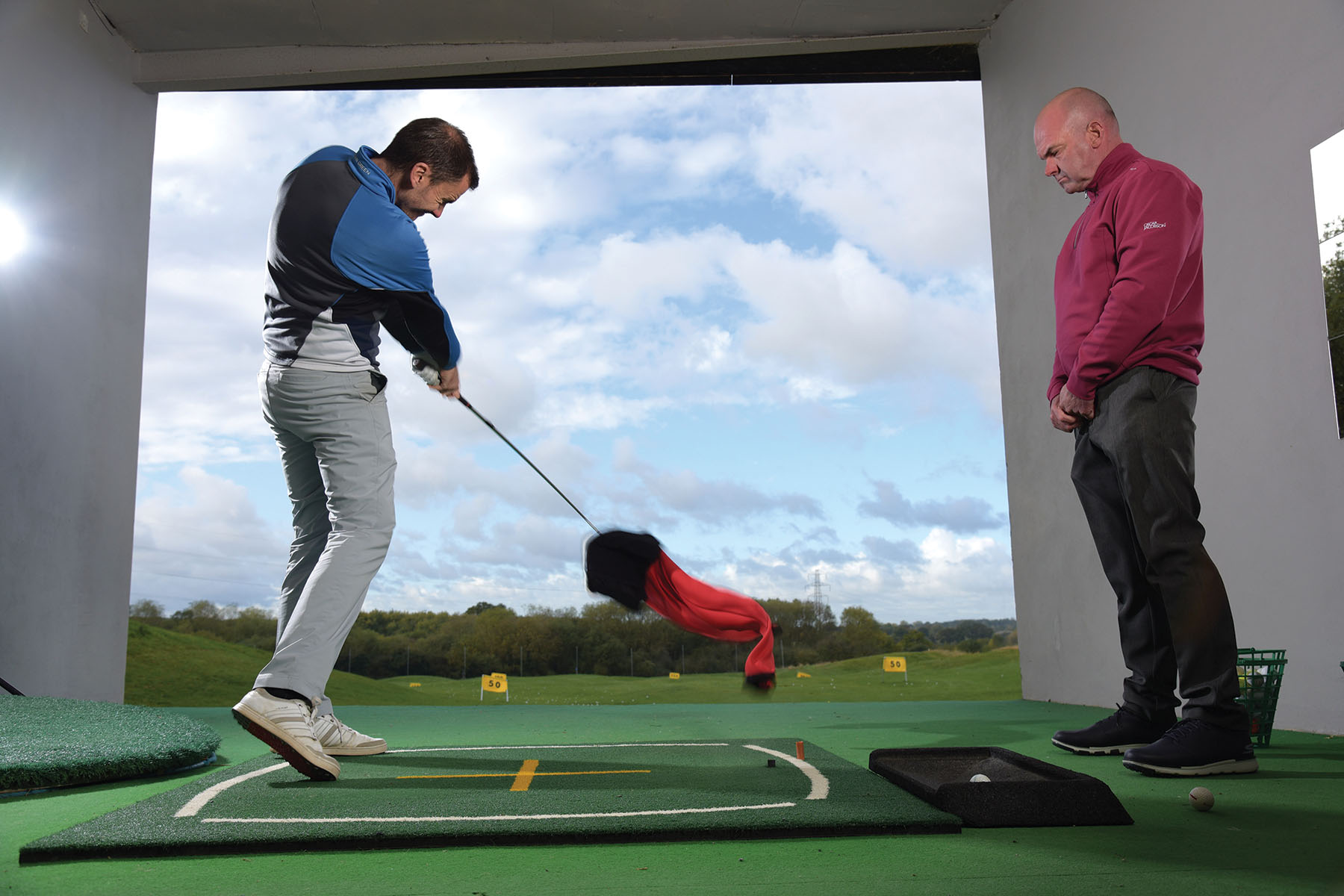Golfers all across the globe share a single obsession: distance and the pursuit of it. They may chase it through new, cutting-edge drivers or by improving strength and speed – but ultimately, it comes down to their swings. And that, of course, should be the first priority and low-hanging fruit through working with a skilled, knowledgeable swing coach.”
Perhaps the golfers most obsessed with distance are long drivers – after all, it’s their business to be long. So, who do they turn to for training tailored to their needs? In today’s age of generative AI, they might simply type “best long drive coach in the world” into a browser, where they would find Lee Cox.

Who is Lee Cox? A Fellow Professional of the PGA (of Great Britain and Ireland), he’s the head golf professional at The Shire, London – a stunning Seve Ballesteros-designed facility. Just a quick Northern Line Underground ride from London takes you to High Barnet, close to where the course is located. Cox began playing golf at 14, quickly became hooked, and after working various roles in pro shops, qualified as a PGA Professional by age 22 – and was a head Professional by 25. He had found his calling!
Coaching long drivers was entirely serendipitous. In his own words, he “stumbled into” it when Joe Miller’s father asked him to help his son try it, over 20 years ago. Joe went on to become World Champion in 2010 and 2016, while Lee’s students collectively earned over 200 wins, including four World titles.
“My most recognized long drive students include Joe Miller and Martin Borgmeier,” says the coaching legend. In fact, Joe Miller once said, “I could not have won the ‘Remax World Long Drive’ without Lee’s coaching. His knowledge and ability to communicate gave me all the tools I needed to become World Champion.”
Additionally, Cox advised famous British coach Denis Pugh during his work with Francesco Molinari on adding distance ahead of his British Open win; and also helped Oliver Wilson, a Ryder Cup player and Tour winner.
What’s the difference between working with long drivers and Tour players or recreational golfers? “Everything needs to be exaggerated,” Cox said. “There is a slightly lower premium on accuracy, and you need to learn to hit the ball at 100 percent of your capacity. Apart from the grip – which any good style of grip can work – most things might change from wider stances, to longer swings, to more excessive movements in the different planes of motion.”
What’s his training process? It starts with assessing whether a new long drive student needs more mobility, strength, swing refinement, or speed training. He collects data using video, a Flightscope launch monitor, and the 3D app Motion2Coach, then builds a structured practice plan, while working with specialists in physical training, force plates, and advanced 3D capture.
Cox is, incidentally, highly inventive with training aids, too. In addition to assessment and data collection tools, he uses gadgets like speed sticks, Michael Romatowski’s Mach 3, and Tour Tempo products – often repurposing them to target specific swing improvements. For example, he might use the Mach 3 Speed Bomber to teach the correct takeaway sequence, or a light speed stick to encourage a faster takeaway.

Does he follow a specific order to diagnose swing issues? Not exactly. Cox acknowledges that while any change is intended to help, it can initially disrupt things. He approaches swings through two global ideas: how the body moves, and how the arms, wrists and club move. He evaluates whether club or ball speed – or both – need improvement and considers what the student’s body and skill level can realistically support.
It was fascinating to watch Lee recently, as he generously shared a ton of information while simultaneously working with Luke Curtis, a Long Drive competitor returning from injury and aiming to rebuild speed. Over the following weeks, Cox planned to introduce several ideas – raising the lead arm to help increase angle of approach, offering cues to prevent hanging back and using training aids for full-effort swings.
In the end, Cox emphasizes that while swing methods come and go, the laws of physics remain constant – you either deliver the club correctly or you don’t.
What makes Lee Cox’s training so effective is his years of seeking out information and combining science, accrued knowledge, and a strong work ethic. Together, these aspects have served to earn him recognition as one of the top 50 coaches in the UK. His lesson rates are amazingly affordable, and he may be contacted via www.leecoxgolf.com